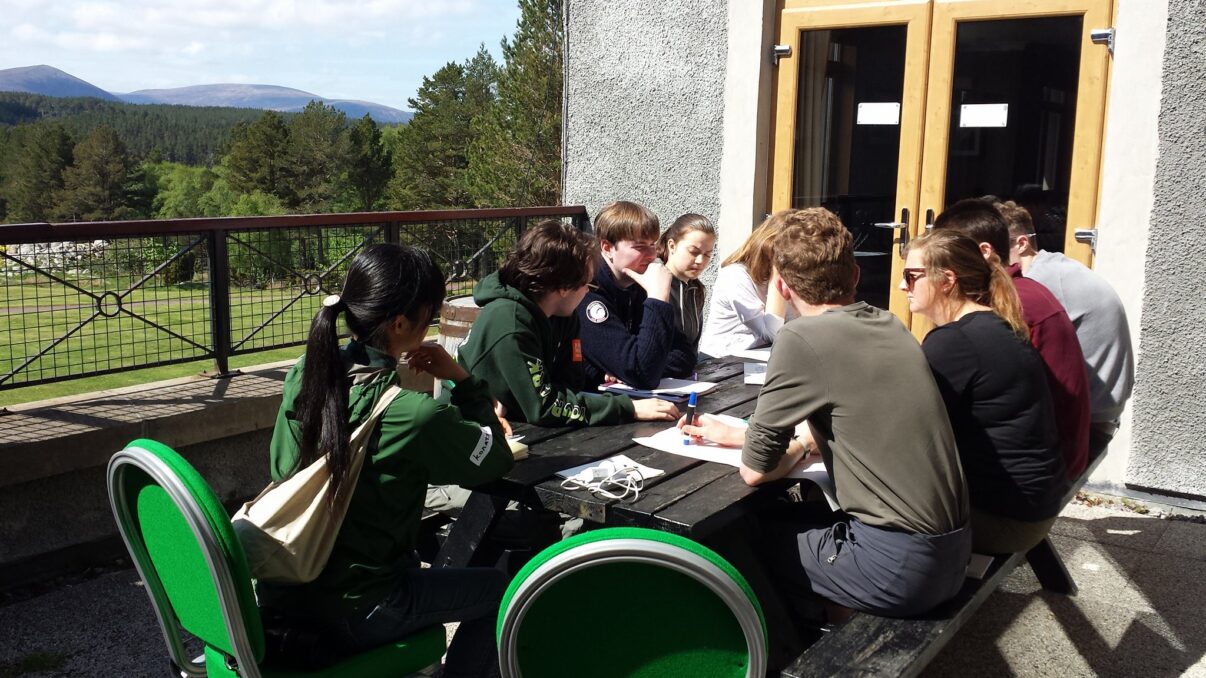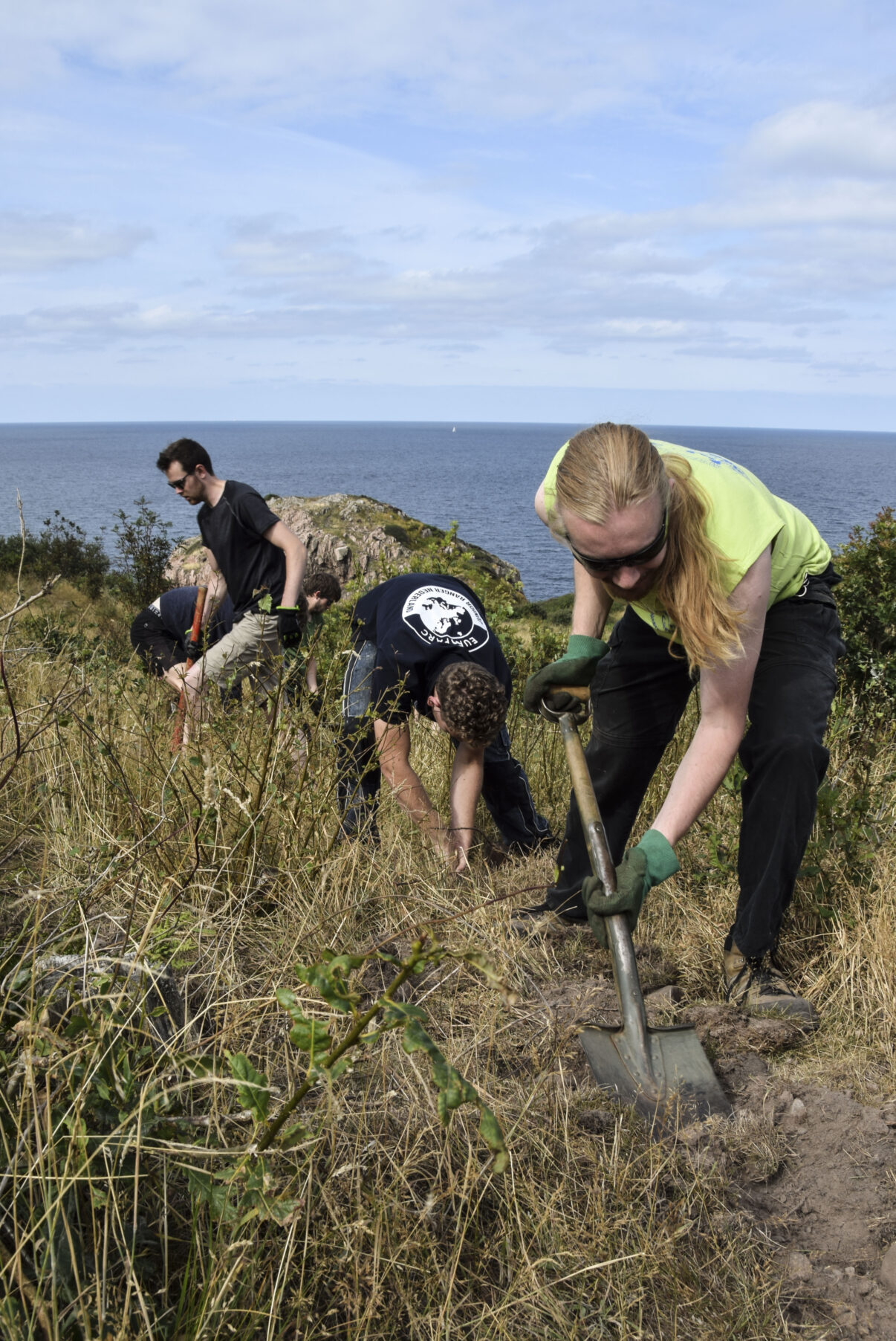This article is written by Jessica Micklem-Kolenić, EUROPARC Youth Officer.

First, what is a Protected Area?
The IUCN defines a Protected Area as “A clearly defined geographical space, recognized, dedicated and managed through legal or other effective means, to achieve the long-term conservation of nature”. Within Europe we have a huge diversity in Protected Areas which include National Parks, peri-urban parks, protected landscapes, biosphere reserves, geoparks, Natura2000 sites and Marine Protected Areas. The different names refer to varying levels of regulations as well as differences in the prioritisation of the goals of the protection.
The EUROPARC Federation, a network of over 400 Protected Areas across Europe and a community of Protected Area professionals, is committed to supporting young people who want to be involved in Protected Areas, from hands-on nature conservation to meaningful participation in decision making spaces.
This is because young people are the future inheritors of our natural and environmental heritage as well as bridges to communities which are integral to the success of nature conservation efforts. Over the last 22 years, EUROPARC has been building up a suite of youth programmes and opportunities, creating a network of youth groups, youth champions and best practices.
This includes:
- EUROPARC Junior Rangers: a non-formal education programme for teenagers to introduce them to frontline nature conservation efforts in Protected Areas and build up their competencies and confidence.
- EUROPARC Youth+: a non-formal mostly youth-led empowerment programme for young adults to advocate for the needs of their communities while helping the Protected Areas create opportunities for change.
- EUROPARC Youth Manifesto: an advocacy tool for young people in rural communities in and around Protected Areas to work together with Protected Areas to combat rural youth depopulation.
- European Youth in Parks Day: an annual event on the 15th of September to highlight and celebrate the youth work in and round Protected Areas.
- EUROPARC Youth Council and Youth Representative: an opportunity for young people in EUROPARC youth programmes and young professionals in the EUROPARC network to help guide the direction of the federation.
- Discounts for young professionals in EUROPARC conferences and events to encourage Protected Areas to invest in upskilling young staff.

So how can you as a young person get involved in a local Protected Area?
There are two main avenues of getting involved; either by choosing a career in or adjacent to Protected Areas or by getting involved on a voluntary basis as a stakeholder. Here are three different ways you can get involved:
1. Participate
As a protected Area Professional: join taskforce teams or offer to help your colleagues working with young people. The saying of “it takes a village to raise a child” is also relevant to youth work in and around Protected Areas. Offer to share your work or spend time with the young people in the environmental education programmes in your organisation.
As a Stakeholder: find out what youth programmes your Protected Area has on offer and participate in them. Some programmes have run to a stop because they couldn’t find enough young people to participate so don’t be shy. The best way would be to reach out to any Protected Area staff in the field of environmental education or community engagement. They can advise you what is on offer and any other potential ways or upcoming ideas. However, not all have a budget to manage youth specific opportunities. In this case look for any other ways to volunteer your time such as stakeholder consultations, advisory boards or general volunteering. By participating you are often lowering the average age, building trust in the voice of youth and showing other young people that a space is youth friendly (if it isn’t you could also advise on how to make it so).

2. Activate
As a Protected Area Professional: Most of the non-formal youth programmes have become established by a passionate professional who takes the initiative to start something new. This is not an easy path but it is a very rewarding one. By connecting with the EUROPARC network of youth mentors you can find support and inspiration for all roadblocks in your way. Another important resource for support if your national ranger association. Finding young people to participate in a youth programme can be a challenge depending on how rural your Protected Area may by.
As a Stakeholder: if there is no offer that suits you, consider if you have the time to start your own. There are many ways you can go about this, either with the Protected Area staff directly, volunteering your time and ideas, but if this is an obstacle, there are ways to partner with other local groups and build up trust to get the recognition and support from your Protected Area for future collaborations. Ideally start with an in-person event that is both fun and interesting to mobilise other young people. From there you can determine what projects and programmes you want to run and work with local partners such as “friends of the park”, hobby groups (e.g. mountain biking or bird watching) and the local municipality youth department. There are also funds that can support your work from local ministries to the European Solidarity Corps solidarity projects (need a minimum of 5 young people from 1 country – all environmental work is solidarity work). Some successful examples from the EUROPARC Youth+ network are Watt°N in the Waddensea and the Young Explorers Programme in the Black Forest.
3. Advocate
As a Protected Area Professional: If you are currently working for a Protected Area or a nature conservation organisation, you can champion inclusive youth opportunities in both formal and informal ways. It is vital for young people to have a youth champion working within an organisation who is trusted and can nudge other decision makers. Some examples to campaign for are including youth in boards and stakeholder processes, upskilling young staff, and investing time into internships and volunteer opportunities.
As a Stakeholder: be an ambassador for Protected Areas within your community and sphere of influence. Many environmental topics are becoming controversial political themes but those working in Protected Areas are not allowed to speak out about political decisions as they are public institutions. As a stakeholder, you have more freedom to bring light to these topics and help gather public support. Some examples of this may be combatting misinformation about large carnivore coexistence or ensuring that people on all sides of the political spectrum value and fund Protected Areas (recently at least 3 European countries have seen their budgets for National Parks or environmental education cut by over 40% despite the increase in national commitments to biodiversity and climate goals).
We hope these examples are inspiring. If you want to stay up to date you can also follow the European Junior Ranger programme on Facebook (@europarc.youth) and the EUROPARC Youth+
programme on Instagram (@europarc.youth). For young professionals, subscribe to EUROPARC’s social media across all platforms to stay in the loop for capacity building opportunities.